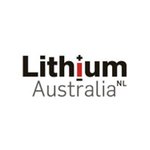LIT grabs grant from WA government – eyes processing hubs
Hey! Looks like you have stumbled on the section of our website where we have archived articles from our old business model.
In 2019 the original founding team returned to run Next Investors, we changed our business model to only write about stocks we carefully research and are invested in for the long term.
The below articles were written under our previous business model. We have kept these articles online here for your reference.
Our new mission is to build a high performing ASX micro cap investment portfolio and share our research, analysis and investment strategy with our readers.
Click Here to View Latest Articles
Lithium Australia (ASX:LIT) has received state cash to explore its Sileach lithium processing technology – the first step on LIT’s plan to establish hubs on three continents.
The ASX-listed company told its shareholders today that it had received just under $196,000 from the Minerals Research Institute of WA to explore using its Sileach technology to process lithium.
The cash will go towards a project it holds in joint venture with fellow ASX-listed company Venus Metals (ASX:VMC) – which will test the commercial viability of VMC’s lithium in the Pilgangoora region of the Pilbara.
The pair will test the processing of VMC’s lithium, firstly at lab scale out of Murdoch University in Perth and then on a pilot plant scale.
The WA government funding will go towards the lab testing.
Should the testing come off on both the lab and pilot scale, LIT says it has longer-term ambitions to establish “a number of processing hubs” with locations to be targeted at lithium resource bases in Europe, Australia, and North America.
This is still an early stage with these targets, so don’t base your investment decision on this fact alone and seek professional financial advice.
LIT has been busy not just on the processing front, but in taking upstream positions – most notably in Australia but also as part of the Electra project in Mexico.
If LIT is able to become a downstream player and combine this with a strong upstream presence, it will be hoping to take advantage of both scale and vertical integration down the line to produce a lithium product near or on par with lithium brine deposits.
How Sileach works
The Sileach process has the potential to release the value from stranded lithium silicate deposits – those deposits quarantined by sub-economic grades. It can then transform low-grade spodumene occurrences into viable ore as, due to lower projected operating costs, it is less sensitive to feed grade.
The result of this is lower cut-off grades for resource calculations, expansion of existing resources without the requirement for further drilling, and greater recovery of metal inventories.
As the lithium is precipitated from solution in the Sileach process, all impurities in lithium silicate feed can be rejected during the production of lithium chemicals.
Spodumene, and other silicates, in which impurity concentrations would otherwise render them unmarketable, can now be considered viable process feed.
General Information Only
This material has been prepared by StocksDigital. StocksDigital is an authorised representative (CAR 000433913) of 62 Consulting Pty Limited (ABN 88 664 809 303) (AFSL 548573).
This material is general advice only and is not an offer for the purchase or sale of any financial product or service. The material is not intended to provide you with personal financial or tax advice and does not take into account your personal objectives, financial situation or needs. Although we believe that the material is correct, no warranty of accuracy, reliability or completeness is given, except for liability under statute which cannot be excluded. Please note that past performance may not be indicative of future performance and that no guarantee of performance, the return of capital or a particular rate of return is given by 62C, StocksDigital, any of their related body corporates or any other person. To the maximum extent possible, 62C, StocksDigital, their related body corporates or any other person do not accept any liability for any statement in this material.
Conflicts of Interest Notice
S3 and its associated entities may hold investments in companies featured in its articles, including through being paid in the securities of the companies we provide commentary on. We disclose the securities held in relation to a particular company that we provide commentary on. Refer to our Disclosure Policy for information on our self-imposed trading blackouts, hold conditions and de-risking (sell conditions) which seek to mitigate against any potential conflicts of interest.
Publication Notice and Disclaimer
The information contained in this article is current as at the publication date. At the time of publishing, the information contained in this article is based on sources which are available in the public domain that we consider to be reliable, and our own analysis of those sources. The views of the author may not reflect the views of the AFSL holder. Any decision by you to purchase securities in the companies featured in this article should be done so after you have sought your own independent professional advice regarding this information and made your own inquiries as to the validity of any information in this article.
Any forward-looking statements contained in this article are not guarantees or predictions of future performance, and involve known and unknown risks, uncertainties and other factors, many of which are beyond our control, and which may cause actual results or performance of companies featured to differ materially from those expressed in the statements contained in this article. S3 cannot and does not give any assurance that the results or performance expressed or implied by any forward-looking statements contained in this article will actually occur and readers are cautioned not to put undue reliance on forward-looking statements.
This article may include references to our past investing performance. Past performance is not a reliable indicator of our future investing performance.

